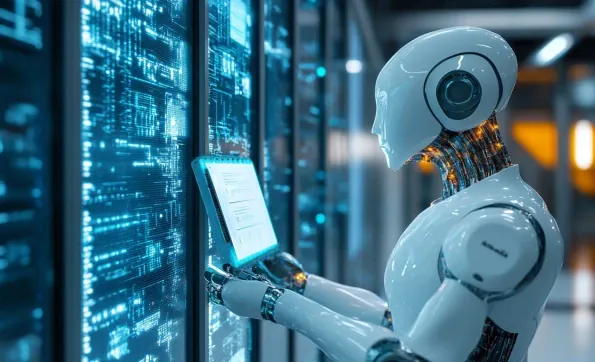The rapidly evolving landscape of cybersecurity demands that companies invest in cutting-edge technologies. Artificial intelligence (AI) and cloud security are at the forefront of this transformation. Their integration into cybersecurity strategies is reshaping the way organizations protect their digital assets from cyber threats. This article explores how AI and cloud security are driving changes in cybersecurity investments and the implications for businesses across various industries.
Rising Cybersecurity Investments
Digital Transformation and Increased Risk
Cyber threats have become more frequent and sophisticated as digital transformation continues to advance at an unprecedented pace. The expansion of online operations, digital services, and interconnected systems has inadvertently widened the attack surface, providing malicious actors with more opportunities to exploit vulnerabilities. Companies endeavoring to stay ahead in this digital age are compelled to reassess their cybersecurity posture and make substantial investments to safeguard their assets.
The integration of cloud technologies and the increasing reliance on digital platforms expose organizations to a myriad of risks, from phishing attacks to ransomware. This heightened risk profile necessitates a proactive approach to cybersecurity, where businesses must deploy advanced protection methods to anticipate and counteract potential threats. The significance of these investments cannot be overstated, as they go beyond mere defense and extend to the preservation of enterprise credibility and customer trust.
Financial Impact of Cyber Threats
The financial repercussions of cyber-attacks can be staggering, affecting not only the immediate operational capacity of an organization but also its long-term viability. In an era where data breaches can lead to substantial financial losses, including legal penalties, restoration costs, and loss of business opportunities, cybersecurity investments become an economic imperative. A single breach could spell disaster, leading to millions in losses and irreparable damage to an organization’s reputation.
To mitigate these risks, businesses are increasingly funneling resources into comprehensive cybersecurity frameworks anchored by AI and cloud security solutions. These investments are justifiable not only from a protection standpoint but also as a means to maintain economic stability. The high costs associated with cyber incidents underscore the need for robust defenses that can withstand sophisticated attacks. By prioritizing cybersecurity expenditures, companies are effectively safeguarding their financial well-being and ensuring continuity in their operations.
The Role of Artificial Intelligence (AI)
Automation of Threat Detection
Artificial Intelligence (AI) serves a transformative role in the automation of threat detection processes, revolutionizing traditional cybersecurity approaches. AI’s ability to scan vast amounts of data with incredible speed enables the swift identification of potential threats that human analysts might overlook. This automation boosts efficiency and response times, allowing organizations to manage risks more effectively.
Machine Learning (ML), a subset of AI, is particularly adept at enhancing pattern recognition in cybersecurity landscapes. ML algorithms access immense datasets to discern subtle patterns indicative of malicious activities, continuously improving their predictive accuracy through iterative learning processes. The unparalleled efficiency of AI technologies compared to traditional methods lies in their capacity to adapt and evolve, making them vital tools in contemporary cybersecurity strategies.
Predictive Analytics for Proactive Defense
Predictive analytics, powered by AI, offer the invaluable capability to foresee potential breaches before they manifest. This proactive approach is essential for modern cybersecurity, where preemptive measures significantly bolster defenses against emerging threats. By leveraging AI’s predictive prowess, organizations can fortify their security postures through strategic anticipation and timely intervention.
Predictive analytics harness extensive datasets to recognize indicators of compromise, monitoring network traffic and user behavior for signs of impending attacks. The application of these insights allows cybersecurity teams to devise targeted countermeasures that neutralize threats in their infancy, minimizing potential damage. Embracing AI-driven predictive analytics is not merely a technological choice but a strategic necessity in the evolving threat landscape.
Importance of Cloud Security
Migration to Cloud-based Operations
The migration of data and applications to cloud-based environments marks a significant shift in operational paradigms. Businesses are drawn to the scalability, flexibility, and cost-efficiency that cloud infrastructures offer. However, this shift also necessitates a robust approach to cloud security, aimed at protecting data integrity, confidentiality, and regulatory compliance, which are of paramount importance in cloud-based operations.
Ensuring the security of cloud environments involves deploying sophisticated protection mechanisms that guard against unauthorized access and data breaches. Cloud security solutions are designed to provide comprehensive defenses, encompassing encryption, identity management, and regular security assessments. With data increasingly migrating to the cloud, businesses must adopt a continuous monitoring and adaptation strategy to effectively manage cloud-related risks and safeguard their digital assets.
Integrated Cloud Security Solutions
Investments in integrated cloud security solutions reflect a recognition of the critical need for robust protection mechanisms tailored specifically to cloud environments. These solutions offer layered defenses that address myriad security concerns, from unauthorized access to data integrity breaches. By integrating cloud security tools and protocols into their cybersecurity frameworks, companies can ensure a more holistic approach to safeguarding their digital assets.
Maintaining data security in the cloud is a dynamic process that involves constant vigilance and adaptability. Cloud security solutions are not static; they evolve in response to emerging threats and technological advancements. Continuous monitoring and regular updates are crucial to ensuring the efficacy of these security measures. Businesses that prioritize investments in integrated cloud security solutions are better equipped to handle the complexities associated with protecting data in cloud-based environments.
Machine Learning in Cybersecurity
Identifying Patterns and Anomalies
Machine Learning (ML) plays an instrumental role in identifying patterns and anomalies in cybersecurity contexts. Through sophisticated algorithms, ML can scrutinize extensive datasets to detect suspicious activities, flagging potential threats before they escalate. By continuously learning from new data, ML enhances its threat detection capabilities, making it a powerful tool for preempting cyber incidents.
The ability of ML to discern anomalies from regular patterns is invaluable in pinpointing security threats. These algorithms can recognize deviations from established norms that may indicate malicious behavior, enabling cybersecurity teams to respond swiftly and effectively. The dynamic nature of ML technologies ensures that as threats evolve, the security measures employed to counteract them also become more refined, creating a formidable defense mechanism.
Adapting to Evolving Threats
The adaptability of Machine Learning algorithms to new types of threats underscores their importance in modern cybersecurity strategies. As cyber threats become more sophisticated, cybersecurity measures must evolve in tandem. ML’s ability to learn from each encounter with a threat and apply those learnings to future incidents makes it a vital component of adaptive cybersecurity frameworks.
Investing in ML technologies helps organizations anticipate and respond to emerging threats more effectively. By continuously refining their defenses based on new data and insights, companies can stay ahead of the threat landscape. This proactive approach not only enhances security but also instills confidence in stakeholders, ensuring that the organization is well-prepared to handle sophisticated cyberattacks.
Regulatory Compliance
Stringent Security Mandates
The imposition of stringent security mandates such as the General Data Protection Regulation (GDPR) and the California Consumer Privacy Act (CCPA) has profoundly influenced cybersecurity investments. These regulations require organizations to adopt robust security measures to protect sensitive data and ensure privacy. Non-compliance can result in hefty fines and loss of consumer trust, compelling companies to prioritize investments in technologies that ensure regulatory adherence.
Organizations must implement comprehensive security frameworks that meet regulatory standards, encompassing data encryption, access controls, and regular audits. The pressure to comply with these mandates has driven significant investments in cybersecurity solutions, aimed at safeguarding user data and maintaining regulatory compliance. This adherence is not just a legal obligation but a critical component of the overall cybersecurity strategy.
Role of Compliance in Driving Investments
Compliance pressures play a pivotal role in driving cybersecurity investments across industries. The mandates set forth by regulations necessitate continuous investment in advanced security technologies, ensuring that organizations remain compliant while effectively protecting user data and privacy. The need to adhere to regulatory standards motivates companies to enhance their cybersecurity postures, reflecting a broader commitment to data protection.
Companies that prioritize compliance are better positioned to avoid legal pitfalls and maintain trust among stakeholders. Investments in security technologies that facilitate regulatory adherence are seen as essential to the overall business strategy. This focus on compliance not only helps in mitigating risks but also underscores the organization’s commitment to safeguarding personal data, which is crucial for maintaining credibility and customer loyalty.
Human Element in Cybersecurity
Importance of User Awareness
Despite the advancements in cybersecurity technologies, the human element remains a critical factor in ensuring robust security. Human error is often cited as a weak link in cybersecurity defenses, making user awareness and training programs indispensable. Educating users about potential threats and best practices is vital to mitigating risks and complementing technological defenses.
Investing in education helps to create a security-conscious culture within the organization. Training programs that highlight the importance of vigilance and proper conduct in digital environments can significantly reduce the likelihood of breaches caused by human error. By fostering a knowledgeable and alert workforce, companies can strengthen their overall cybersecurity posture and enhance their defenses against external threats.
Ongoing Training and Education
Continuous education and training are necessary to keep pace with the evolving threat landscape. Cyber threats are constantly changing, and personnel must be equipped with the latest knowledge and skills to recognize and respond to these challenges effectively. Ongoing training programs ensure that employees are well-prepared to handle new types of threats, maintaining a high level of awareness and readiness.
Training initiatives should be comprehensive, covering various aspects of cybersecurity, from phishing prevention to data protection protocols. Regular updates and reinforcement of training content are essential to maintaining an informed and capable workforce. By investing in ongoing education and training, organizations can ensure that their personnel are an integral part of the cybersecurity strategy, contributing to a more resilient defense system.
Collaborative Defense Mechanisms
Business Collaboration for Security
Collaboration among businesses is a critical component of effective cybersecurity strategies. By working together and sharing threat intelligence, companies can enhance their threat detection and response capabilities. Collaborative efforts foster a collective defense against cyber threats, pooling resources and expertise to build a stronger cybersecurity network.
Investing in collaborative mechanisms allows businesses to benefit from shared insights and best practices, improving their overall security posture. Joint initiatives can lead to more efficient threat identification and mitigation processes, reducing the impact of cyber attacks. The collaborative approach emphasizes the importance of unity in the fight against cyber threats, demonstrating that collective action can lead to more effective and comprehensive cybersecurity measures.
Government and Industry Cooperation
The cooperation between government entities and cybersecurity firms plays a pivotal role in combating cyber threats. Public-private partnerships lead to better resource allocation and threat management, leveraging the strengths of both sectors to enhance security measures. Government support can provide vital resources and frameworks, while industry expertise drives the development of advanced technologies and solutions.
Cooperative initiatives between government and industry can lead to the establishment of standards, guidelines, and best practices that benefit all stakeholders. These partnerships foster a collaborative environment where information sharing and mutual support are prioritized, strengthening the overall cybersecurity landscape. By working together, government agencies and industry players can create a more secure digital environment, addressing threats more effectively and ensuring a robust defense mechanism.
Emerging Technologies in Cybersecurity
Blockchain Security
Blockchain technology offers unique capabilities for securing digital transactions, marking a significant advancement in cybersecurity frameworks. Its decentralized nature provides robust protection against tampering, ensuring the integrity of data and transactions. By investing in blockchain technology, organizations can enhance their cybersecurity measures, benefiting from the inherent security features of this innovative technology.
The implementation of blockchain in cybersecurity contexts involves deploying its capabilities to secure data and transactions, preventing unauthorized access and manipulation. Blockchain’s transparency and immutability are key attributes that contribute to its effectiveness in safeguarding digital assets. As the adoption of blockchain technology continues to grow, its role in cybersecurity becomes increasingly prominent, offering valuable insights and solutions for enhancing digital security.
Zero-Trust Security Models
Zero-trust security models are gaining traction in contemporary cybersecurity strategies, emphasizing a stricter approach to security controls. These models operate under the assumption that all network traffic is potentially malicious, enforcing stringent verification processes for every access request. Investing in zero-trust approaches helps to tighten security controls, reducing the risk of unauthorized access and breaches.
The adoption of zero-trust security models involves implementing comprehensive protocols that scrutinize all activity within the network. This approach minimizes the likelihood of unauthorized access and ensures that all entities within the network are continually verified, maintaining a high level of security. The effectiveness of zero-trust models in enhancing cybersecurity measures underscores their growing importance in the industry’s strategic frameworks.
Economic Justification for Cyber Investments
Financial Safeguards Against Cyber Threats
Investing in cybersecurity is vital to protect economic integrity, reflecting the necessity of strong financial safeguards against cyber threats. Preventing breaches helps organizations avoid costly financial repercussions, from restoration expenses to potential legal penalties. The economic justification for cybersecurity investments is evident in the substantial financial risks posed by cyberattacks.
Strong cybersecurity measures serve as a crucial economic necessity, preserving an organization’s operational capacity and financial stability. By prioritizing investments in advanced technologies and defense mechanisms, companies can effectively mitigate risks and ensure continuity in their economic activities. The financial safeguards provided by robust cybersecurity frameworks underscore the strategic value of these investments, highlighting their importance in maintaining economic integrity.
Long-Term Benefits of Cyber Investments
In today’s fast-changing world of cybersecurity, it’s imperative for companies to invest in state-of-the-art technologies. Leading the charge in this transformation are artificial intelligence (AI) and cloud security. These advancements are not just buzzwords; they are fundamentally altering how organizations safeguard their valuable digital information against cyber threats.
AI and cloud security have become key components in modern cybersecurity strategies. Artificial intelligence brings the capability to analyze vast amounts of data quickly, identifying patterns and anomalies that human eyes might miss. This helps in detecting and responding to threats more efficiently. On the other hand, cloud security offers scalable and flexible protections, adapting to the dynamic needs of a company’s digital infrastructure.
As a result, businesses across various sectors are reassessing their cybersecurity investments to incorporate these innovative technologies. The integration of AI and cloud security is not just about enhancing protection measures but also about staying ahead in a landscape where cyber threats are becoming increasingly sophisticated and relentless. This shift has profound implications, signaling a new era in cybersecurity where agility and advanced technology collaboration are essential to defend against evolving cyber threats.













